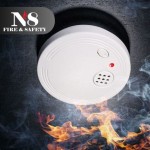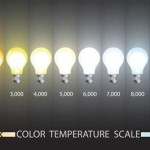Essential Aspects of Warm Light LED
Warm light LEDs have emerged as a preferred choice for lighting applications due to their unique characteristics and energy efficiency. Understanding the essential aspects of warm light LEDs is crucial for selecting the most suitable lighting solutions. This article explores the key factors to consider when evaluating and employing warm light LEDs.
1. Color Temperature
Color temperature measures the perceived warmth or coolness of light emitted by an LED. Warm light LEDs typically have a color temperature ranging from 2700K to 3500K, providing a cozy and inviting ambiance resembling incandescent or halogen sources.
2. CRI (Color Rendering Index)
CRI quantifies how accurately light sources render colors compared to natural sunlight. Warm light LEDs with a high CRI (90+ RA) reveal colors vividly, making them ideal for applications where color accuracy is essential (e.g., museums, retail stores).
3. Dimmability
Dimmable warm white LEDs offer flexibility and ambiance control. Dimming allows users to adjust lighting levels, creating a desired mood or reducing energy consumption. Compatibility with various dimming protocols ensures compatibility with existing infrastructure.
4. Energy Efficiency
Warm light LEDs consume significantly less energy than traditional incandescent bulbs while providing comparable light output. Their long lifespan (approx. 50,000 hours) reduces maintenance costs and promotes sustainability.
5. Applications
Warm light LEDs find applications in diverse settings, including residential homes, commercial spaces, hospitality, healthcare, and retail outlets. Their warm and inviting glow creates a comfortable and visually pleasing environment.
6. Safety
Warm light LEDs operate at a low voltage (typically 12V or 24V), making them inherently safer than high-voltage lighting fixtures. Their low heat emission also minimizes fire hazards.
7. Environmental Impact
Warm light LEDs are environmentally friendly due to their energy efficiency and lack of hazardous materials. They reduce greenhouse gas emissions and contribute to sustainable lighting practices.
Conclusion
Understanding the essential aspects of warm light LEDs is crucial for selecting optimal lighting solutions that meet specific requirements. By considering color temperature, CRI, dimmability, energy efficiency, applications, safety, and environmental impact, professionals and consumers alike can make informed decisions and enjoy the benefits of warm, energy-efficient lighting in their projects.

Copper Wire Lights 40 Led Extra Warm White Glow Specialist

Which Colour Temperature Shall I Choose For My Led Light Energuide

Warm White Or Cool Integral Led

Soft White And Other Led Color Temperatures Philips Lighting

Warm White Curtain Led Lights Cozy And Elegant Ambiance Chronos

Led Lights In Soft White Vs Daylight Mklights

Warm White Light Or Cool How Should We Choose

6 Led Outdoor Wall Gate Lamp Up And Down Light Waterproof Warm White Ashish Electrical

Led Bouwlamp Schijnwerper Breedstraler Zwart 100w Ip65 3000k Ledpaneelgroothandel Nl
Warm White Led Light Philips Lighting








